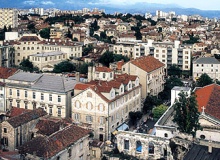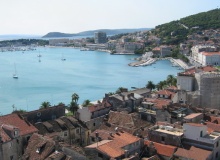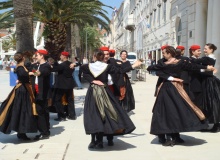Croatia
Travel to Croatia and you will discover destination with so much to offer including good food, good wine, beautiful beaches. Charming villages and striking architecture.
Every year, more and more travellers are taking holidays in friendly, picturesque Croatia along the Adriatic coast. It has much to offer: good food, good wine, beautiful beaches, clean water, gorgeous scenery, historic cities, charming villages, striking architecture, Roman ruins and well-preserved antiquities.
Also, Croatia's infrastructure is solid since multi-lane highways and international hotels have been built to accommodate the large number of tourists that populate the country annually. Holiday and pleasure-seekers from all over the world go to relax and enjoy the laid-back beaches and other beautiful scenery that Croatia offers.
Yachts glide up the coast and movie stars discreetly arrange to buy one of Croatia’s 1185 islands. The interior landscape is as beguiling, even though less visited. Soak in a thermal spa at Istarske Toplice in Istria. Hike through pristine forests watered by mountain streams in the west. And then there's the culture. You’ll find a strong central European flavour in the baroque architecture of Zagreb, and Italian devotion to the good life percolates up from the coast, permeating Croatian food and style.
During holidays and festivals the country’s Slavic soul emerges, as colourfully costumed dancers whirl about to traditional folk melodies.
Croatians retain a strong attachment to the traditions that nourished the dream of independence for so long. There is a real commitment to preserving the extraordinary beauty of the coast. Whether the country can hold out against the lure of easy money is an excruciating test of its character. But, so far the signs are promising.
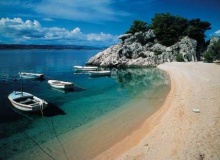

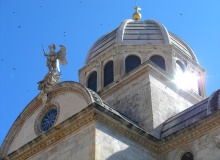
Dubrovnik
Like something out of a picture-perfect fairy tale, the Old Town of Dubrovnik is a walled medieval city, with drawbridges (used in the 1991-92 war) and 6m high gates guarding the main entrances. The entire city is a UNESCO World Heritage Site, but it's also very much a living, breathing city.
From the 2 km of crenulated ramparts and watchtowers there are some perfect views of the city and the sea. Also, because the Old Town is blissfully free of traffic after 10 am, the main streets (Placa or Stradun), squares and alleyways are perfect for exploring the city on foot.
Most of the inhabitants of Dubrovnik live outside of the Old Town's city walls. However, inside those walls, the streets and alleyways are crammed with tiny shops, bars, cafes and restaurants that spill out onto the street at every conceivable point.
The serious damage from the Serbia-Croatian War has been completely repaired. Locals are still keen to point out the shrapnel and bullet damage that has been retained as a reminder of those dark days.
WHEN TO TRAVEL to Dubrovnik
With its tourist-friendly Mediterranean climate, summer is the most popular time to travel to Dubrovnik, although it can be very hot and humid during the day. Winters are mild, but wet. Spring and autumn are increasingly popular times to visit Dubrovnik due to the pleasant weather, fewer crowds and cheaper prices.

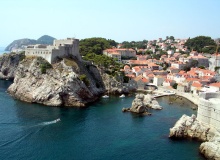
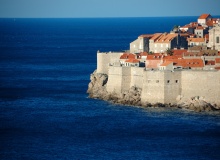
Zagreb
Croatia's capital and largest city, Zagreb also was the cultural capital of the former Yugoslavia. The city boasts many museums, art galleries, orchestras and folk festivals. Today, outdoor cafes are full, dance clubs pump music into the night air and art festivals are popular.
Zagreb has several reminders of the Austro-Hungarian period, particularly the decorated facades and the deep yellow color of old government buildings.
The city can be divided into three areas: the upper town, or old town (the winding part up in the mountains), the lower town (the flat, gridlike section) and the new part (the surrounding plain covered with concrete-block apartment buildings). Confine your sightseeing to the first two areas: You won't miss much by skipping the third.
Also worth visiting is the small village of Marija Bistrica, where the Church of St. Mary of the Snows houses a 15th-century statue of a black Madonna. The statue is credited with miraculous deeds and attracts many tourists and religious pilgrims to the area.
The Zagreb Film Festival takes place in late October, with screenings and public concerts part of the celebration.
WHEN TO TRAVEL to Zagreb
Summer is the popular time for a Zagreb holiday when the weather is warm and dry. Surprisingly temperatures reach a peak early in the season with hot spells in late May sometimes hitting 30°C and above. Winters are very cold and snowy, and autumn is sees plenty of rain and fog.
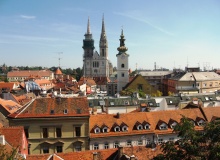
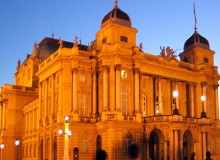
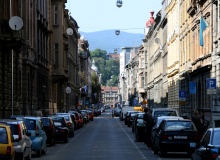
Split
The seaport of Split, designated by UNESCO as a cultural treasure, lies on the Dalmatian coast 260 km south of Zagreb. Its palm-lined oceanfront promenade is reminiscent of the French Riviera, but the rest of the old city reveals a striking combination of Roman, Venetian and Hapsburg influences.
The Roman emperor Diocletian built a palace in Split in the fourth century, and Prime Minister Joseph Broz Tito maintained a palace in the city. Diocletian's palace forms the heart of the old town (the ruins are thought to be some of the best-preserved Roman architecture in eastern Europe).
Over the centuries, the people of Split have made themselves at home within the walls of the enormous palace—you can have coffee at a café next to a huge column from the palace standing in the centre of the building.
Also in town are the Mestrovic Gallery, an archaeological museum and the Temple of Jupiter, which was part of Diocletian's palace. It is pleasant to spend time just walking around this city. Take a ride up the hill of Marjan for a fabulous view of the city and the sea.
Day trips also can be made from Split to Medugorje, a religious shrine.
WHEN TO TRAVEL to Split
The best time to visit Split is in summer, when Music Festival is held. Summer is also excellent for swimming since beaches are plentiful. Restaurants, taverns, cafés and bars are located at the seafront, and local dishes, mainly seafood, go well with local wine.
